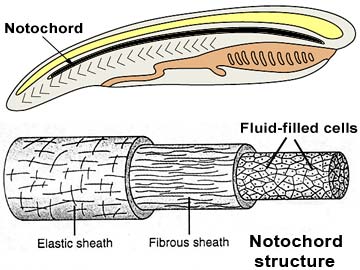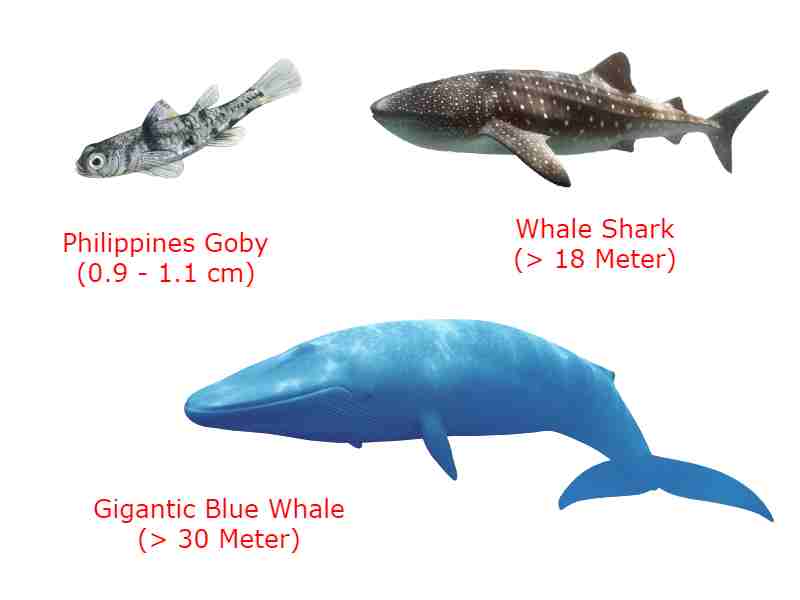In phylum Chordata in some animals have well-defined heads and skulls but some do not have any typical heads, based on this feature we can classify phylum Chordata into two groups – Acrania and Craniata.
Those chordates who a specialized head and cranium or brainbox are known as Craniata, Craniata are also known as Euchordata, they are considered as higher Chordate.
On the other side, the group of chordates that do not have any specialized head or cranium is known as Acrania, they are considered as lower chordates and they are commonly known as Protochordata or primitive Chordata.

Table of Contents
What is Acrania:
- The word Acrania and Craniata both are related to the word cranium, so it is clear that the categorization of phylum Chordata into two groups, Craniata and Acrania is based on the presence of skull or cranium or brainbox.
- In some Chordate, heads do not present and they also do not have cranium, jaw, vertebral column, they are known as Acrania.
- Acrania is considered as lower chordate because they do not have advanced features like brain, skull, vertebral column and in the timeline of evolution, they arise before other animals of chordate so they are known as primitive chordate.
- Acrania are mostly marine, some important members of Acrania are Branchiostoma and Asymmetron.
What is Craniata:
- Craniata are advanced Chordata, they have a brain and specialized head with cranium or brainbox.
- They are considered advanced Chordata due presence of some advanced features, skull or cranium, jaw, vertebral column, or backbone.
- Craniata have chambered heart for effective circulation and brain have paired cranial nerve, Craniata contains all Vertebrate.
- They have some very advanced features, blood vessels for effective blood circulation, kidneys for excretion, different sensory organs, eyes, auditory organs.
- Their blood vascular system helps specialized blood cells or corpuscles, the hepatic portal system is also a very important feature, examples of Craniata are humans, fish, frogs, reptiles.

What are the Fundamental Similarities Between Acrania and Craniata:
- Both Acrania and Craniata are Chordate so it is normal that both Acrania and Craniata must have some common features and now we will focus on those similarities.
- They have a dorsal hollow nerve cord and in Craniata Vertebrate have the nerve cord in the form of the spinal cord and the anterior part of the nerve cord expands to form the brain.
- In Acrania and Craniata the pharyngeal wall has paired slits, those slits help in filter-feeding in some marine Chordate, in fish those slits help in gaseous exchange, in higher Chordate they vanished during the adult stage.
- The notochord is a rod-like supporting structure that presents in both Acrania and Craniata but in some members of Acrania, it does not present along the entire length of the body, in vertebrates the notochord form vertebral column.
- Post anal muscular tail is also a common feature of Acrania and Craniata but higher members of Craniata do not have the post-anal tail in the adult stage.
What are the Differences Between Acrania and Craniata:
| Acrania | Craniata |
| They do not have a head or cranium or brainbox, they do not have specialized sensory organs. | They have a head and brain protected by a brainbox or cranium, other advanced sensory organs are also present in them. |
| They are primitive Chordata or lower chordate and they are mostly marine, their size is small. | They are higher Chordate or Advanced chordates, their size varies medium to large, they are present in all types of habitat, aquatic, marine, or aerial. |
| Acrania have true coelom and it formed by bidding of archenteron during embryonic development, so they are enterocoelomic. | Craniata also has true coelom but in Craniata coelom is formed by splitting of mesodermal tissue during embryonic development, so Craniata is schiezocielomic. |
| The excretory organ is mainly kidneys and in Acrania kidneys are pronephric. | In Craniata, kidneys are mesonephric or metanephric. |
| Life history contains a larval stage, so development in Acrania is indirect and the larval stage is free-swimming. | The life history of Craniata may have a larval stage or not, so in Craniata development is direct or indirect. |
| In the circulatory system, the heart may present or not, if the heart is present it is chamber less and blood corpuscles are absent. | In Craniata heart is multi-chambered and the blood has blood corpuscles. |
| Reproductive occur both sexually or asexually, gonoduct do not present. | In Craniata reproduction occur through sexual reproduction and specialized gonoduct present. |
| Advanced features like vertebral column, cranial nerve, auditory organ, jaw absent. | The vertebral column paired cranial nerve, jaw, different sensory organs including auditory organ present. |

Detailed Study on
Difference Between Chordata and Nonchordate
Phylum Chordata General Characteristics Features
Why Chordate are Advanced than Nonchordate
Chordate and Higher Non-chordates Similarity
Phylum Chordata 3 Fundamental Character
Phylum Chordata and Its Diversity
Chordata Definition with Examples
Classification of Phylum Chordata
Resource: Difference Between Acrania and Craniata
Hi Everyone!!! Welcome to Imaluop. Imaluop always try to learn some new and he want to share to other people. Here we will try to learn various topics on Science, specially on Biological Sciences.
